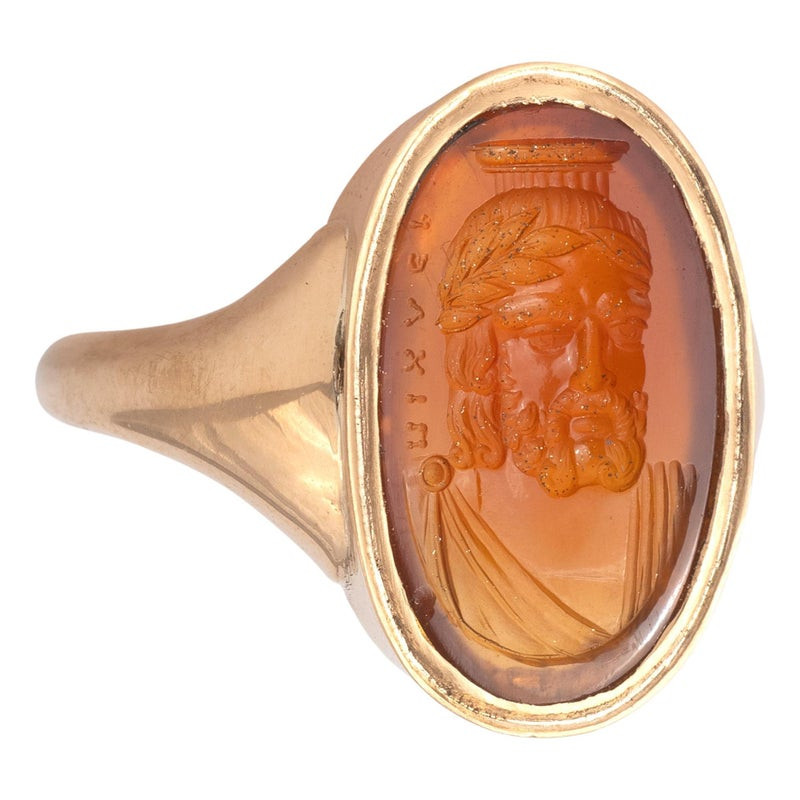

The intaglio, dating back to the 10s of the Nineteenth century, depicts a classical character with a laurel wreath. Luigi, who belonged to a family of gem engravers, ran the family studio from 1791 and worked for the Habsburgs in Vienna. He influenced the French jeweler François-Régnault Nitot who tried to bring him to Paris. He was a member of the Academies of San Luca and Venice and became a Knight of the Orders of St. Gregory the Great (1839) and St. Sylvester (1842).
The intaglio, dating back to the 10s of the Nineteenth century, depicts a classical character, as can be deduced from the hair, the presence of the laurel wreath, the classical column that can be seen in the background and, above all, the presence of the greek inscription on the left, which roman engravers are used to imitate. Luigi comes from a prominent family of gem engravers and began to run the family studio directly from 1791. He also worked for the Habsburg family in Vienna, greatly influencing the French court jeweler François-Régnault Nitot who tried to persuade him to move to Paris. Later Luigi Pichler became a member of the Accademia di San Luca and the Accademia di Venezia, while in 1839 he became a Knight of the Order of San Gregorio Magno and in 1842 of the Order of San Silvestro.
Luigi Pichler (1773-1854)
Period: 1820 circa, Roma
Size of the intaglio: 19 mm
Ring Size: 7
Weight: 11.52 gr





You might also like